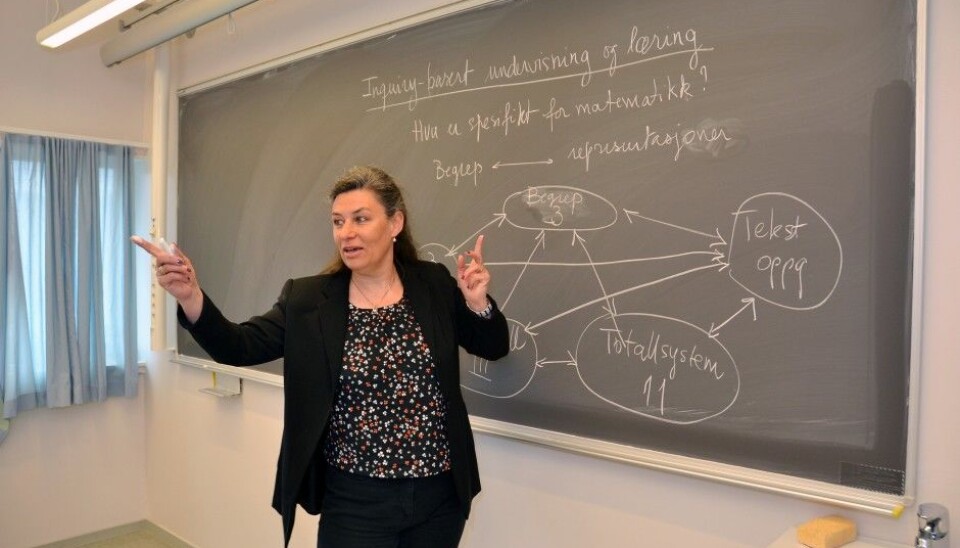
Math teachers need to understand how pupils think
In order to improve the teaching of mathematics, it is essential that teachers understand how the pupils think when they solve a problem. Insights from research can help.
Denne artikkelen er over ti år gammel og kan inneholde utdatert informasjon.
A research project at the University of Agder (UiA) suggests that when teachers know more about research in mathematics, it is more likely that their pupils will do better.
“A shepherd is 27 years old. He has 25 sheep and 10 goats. How old is he?”
A student in 5th grade answers: 62 years old.
“The answer may seem illogical, and it may seem difficult to understand how the student thinks. But this is a very interesting example of how pupils reason when they solve a word-based problem,” says Claire Vaugelade Berg.
Vaugelade Berg is an associate professor in the Department of Mathematical Sciences at the University of Agder. She often uses this example with students who aspire to become teachers.
The research project at the University of Agder includes a course for student teachers. One of the tasks of the students is to conduct research. The purpose is to make them more aware of how pupils think when they are working on problems.
Assuming too much
How does the pupil arrive at the illogical answer?
Research at the University of Agder shows that pupils make several assumptions:
- The problem is meaningful.
- There is only one correct answer.
- The answer is precise and numeric.
- All numbers quoted have to be used.
- The final answer will be an integer.
- The task contains all necessary information.
In summary, nothing is missing and nothing is superfluous, Vaugelade Berg explains.
Pupils only look at the numbers: 27, 25 and 10. Thus, the answer is 62.
“Once you know why pupils do this, the answer is fully understandable. This makes it easier for teachers to understand the reasons for different kinds of answers,” says Vaugelade Berg.
The research process
The course offers the teachers-in-training insights into the forefront of research in mathematics education – and the typical difficulties with which pupils struggle. One of them is word-based problems. Previous research shows that pupils often have trouble with these.
During a three-week long internship, the students act as teachers in schools while simultaneously acting as scientists. They interview teachers and pupils about math challenges. After the course they write a research report in which they present their findings.
Teachers will be followed over several years
Vaugelade Berg says that students find the course challenging. It is difficult to play the roles of both teacher and researcher. But she sees promising results. Several students have reported that they feel more aware of the research and its importance.
She is currently conducting a long-term study of math teachers who have completed the course. The goal is to see if they continue their research-based approach.
“I hope that teachers will get involved with research. And I hope they will reflect on what they do, what choices they make and why,” the researcher says.
Better training for teachers
Currently, university students are generally unaware of the methods used in research. A key part in the course is the concept of ‘inquiry’ in mathematics research.
“In mathematics education, there should be room for questioning, exploration and finding alternatives. Both pupils and teachers need to understand that there are several ways of solving a math problem,” says Vaugelade Berg.
This project will now be extended to other subjects, first Norwegian and pedagogy.
“We plan to develop this thinking by asking challenging questions and looking for alternative answers for all the subjects in teacher education.”
------------
Read the Norwegian version of this article at forskning.no
Translated by: Lars Nygaard






























